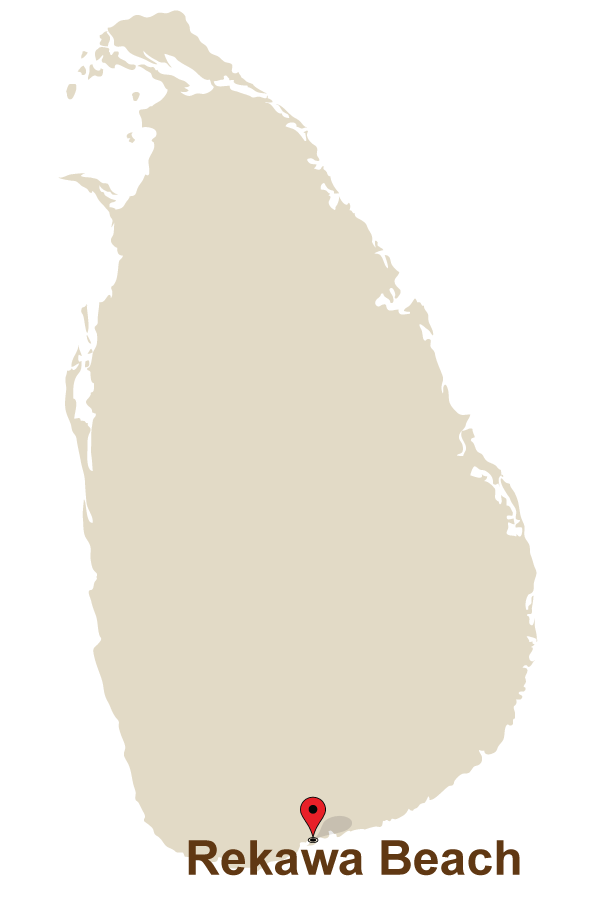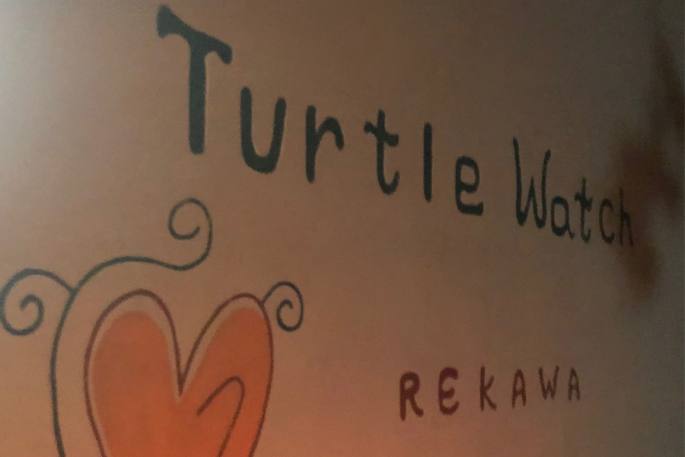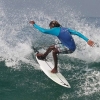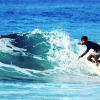Rekawa Beach
Rekawa is a small fishing village and vital eco-tourism venue located about 10km east of the south coast town of Tangalle, Sri Lanka. Rekawa beach has been identified as a habitat to various types of aquatic life, but most notably as a nesting hub for turtles. Rare species like the Hawksbill, Leatherback, Olive Ridley, and Green Turtle choose shores scattered along this beach strip – the low population makes human interruption minimal.
What are the five species of marine turtles found in Sri Lanka?
Green Turtle (Chelonia mydas)
These turtles are migratory and can be found in all tropical and subtropical oceans such as the Indian, Caribbean, Atlantic and Pacific. Young Green Turtles are more carnivorous, while adults are herbivorous and feed exclusively on marine vegetation such as sea grass and marine algae. Green Turtles are an endangered species.
Olive Ridley Turtle (Lepidochelys olivacea)
Quite the runt of the turtle family, the Olive Ridley Turtle is the smallest of the marine turtles. They live in the tropical Indian, South Atlantic and Pacific Oceans, and are omnivorous, eating crustaceans, fish and a range of marine vegetation. These turtles have been recorded nesting on the same beach over a period of a few weeks, and depend on the security of a small number of important beaches to lay their eggs. Olive Ridley Turtles are an endangered species.
Leatherback Turtle (Dermochelys coriacea)
The Leatherback Turtle is the largest of the marine turtle family. Leatherbacks are picky eaters and feed exclusively on jellyfish – they’ll even travel long distances in search of them! Found mainly in the waters of the Arctic Circle, Leatherbacks can survive extreme cold as, unlike their cousins, they can regulate their own body temperature thanks to layers of fatty tissue which insulate their bodies. Leatherback Turtles are an endangered species.
Hawksbill Turtle (Eretmochelys imbricata)
Hawksbills are also relatively small turtles, though larger than Olive Ridleys. Their diet includes jellyfish, sponges and crustaceans. The Hawksbill Turtle gets its name from its narrow bird-like beak, which it uses to catch prey hiding in small crevices. Hawksbill Turtles are a critically endangered species.
Loggerhead Turtle (Caretta caretta)
This turtle nests on tropical beaches, as well as beaches in the Mediterranean and south-east coast of America. Although Loggerheads are common throughout the rest of the world, it is the rarest nesting species in Sri Lanka. Only Loggerheads from the Indian subcontinent nest in Sri Lanka. Research shows a particular colouration from these species specifically, which suggests a unique population with rare genes! Loggerhead Turtles are an endangered species.
 Watch sea turtles lay eggs at Rekawa Beach
Watch sea turtles lay eggs at Rekawa Beach


















